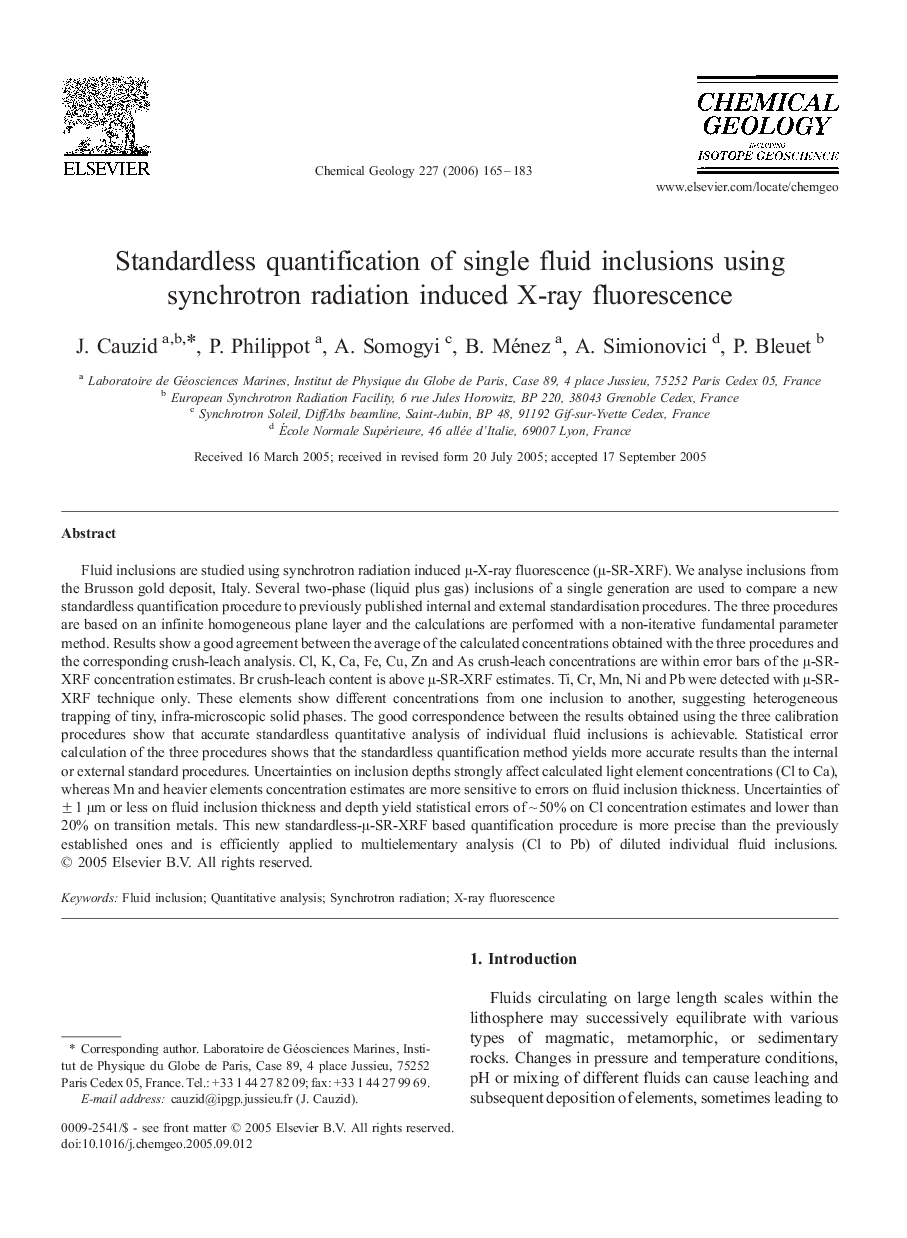| Article ID | Journal | Published Year | Pages | File Type |
|---|---|---|---|---|
| 4701458 | Chemical Geology | 2006 | 19 Pages |
Abstract
Fluid inclusions are studied using synchrotron radiation induced μ-X-ray fluorescence (μ-SR-XRF). We analyse inclusions from the Brusson gold deposit, Italy. Several two-phase (liquid plus gas) inclusions of a single generation are used to compare a new standardless quantification procedure to previously published internal and external standardisation procedures. The three procedures are based on an infinite homogeneous plane layer and the calculations are performed with a non-iterative fundamental parameter method. Results show a good agreement between the average of the calculated concentrations obtained with the three procedures and the corresponding crush-leach analysis. Cl, K, Ca, Fe, Cu, Zn and As crush-leach concentrations are within error bars of the μ-SR-XRF concentration estimates. Br crush-leach content is above μ-SR-XRF estimates. Ti, Cr, Mn, Ni and Pb were detected with μ-SR-XRF technique only. These elements show different concentrations from one inclusion to another, suggesting heterogeneous trapping of tiny, infra-microscopic solid phases. The good correspondence between the results obtained using the three calibration procedures show that accurate standardless quantitative analysis of individual fluid inclusions is achievable. Statistical error calculation of the three procedures shows that the standardless quantification method yields more accurate results than the internal or external standard procedures. Uncertainties on inclusion depths strongly affect calculated light element concentrations (Cl to Ca), whereas Mn and heavier elements concentration estimates are more sensitive to errors on fluid inclusion thickness. Uncertainties of ± 1 μm or less on fluid inclusion thickness and depth yield statistical errors of â¼Â 50% on Cl concentration estimates and lower than 20% on transition metals. This new standardless-μ-SR-XRF based quantification procedure is more precise than the previously established ones and is efficiently applied to multielementary analysis (Cl to Pb) of diluted individual fluid inclusions.
Related Topics
Physical Sciences and Engineering
Earth and Planetary Sciences
Geochemistry and Petrology
Authors
J. Cauzid, P. Philippot, A. Somogyi, B. Ménez, A. Simionovici, P. Bleuet,
